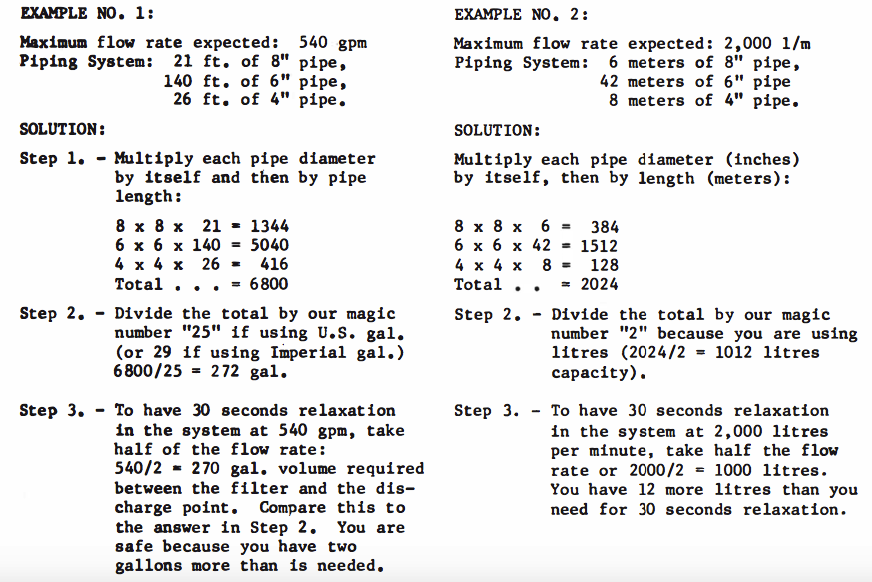
No.7 SPARKS FROM JET FUEL SEPT. 1975 - Revised JULY 1982
If you are already saying to yourself, "I'm not going to read this because I always ground everything". YOU, FRIEND, are the person we want to reach before you kill someone. Read the title again. Sparks FROM Jet Fuel. We are not talking about static charges on pipes, trucks or any object. We are talking about electrostatic charges IN fuel.
Volumes and heaps of deep technical papers have been written on this subject but this article is a pioneering effort toward the non technical. Have you ever noticed that the greater the number of scientific words that are written on a subject, the less the problem is really understood? That is the situation with static charges in fuel.
We like to describe how electrostatic charges build up in fuel
by explaining that it is caused by rubbing molecules together. In
other words, it is caused by friction--friction between molecules. The
more vigorous the rubbing, the greater the charge becomes. Also, the
charge becomes bigger and bigger as more of the molecules in a given
volume are agitated. If the charges move to the wall of the pipe or
tank, they are immediately grounded and can cause no hazard; the whole
problem is that the charges cannot easily move through some fuels to a "ground": these are called "low conductivity" fuels. POSSIBLY YOURS
There is one item of equipment that is clearly the champion of all static charge generators--a filter. The agitation created by splash loading or by pumps, piping, valves and meters causes a charge to develop, but the filter is the place where the most "molecule rubbing" occurs--and the finer the filter, the greater the charge--and the higher the rate of flow through the filter, the greater the charge. If a filter salesman tries to tell you that his filters do not cause any static, throw him out. However, recent studies have demonstrated that Teflon coated separator elements generate lower charge levels than paper separators. It seems logical that there is less friction or agitation caused by a 74 micrometer screen separator than by a tortuous flow path in a 5 micrometer paper. Teflon separators reduce, not eliminate the problem.
Now we should return to the reader in the first paragraph who
threatened not to read this issue because he "grounds everything".
Obviously, if his fuel always has a high conductivity, the charges .will
move to grounded metal components. But if he has a fuel with a low
conductivity, the charges take a period of time to move to ground. If this "charged" fuel is dispensed into a tank, a spark may jump from
the surface of the fuel to a grounded object but tests have proved that the most dangerous situation occurs when there is aQ unbonded object in the vapor
space -- it acts like a capacitor -- it stores up charges
then ZAP. Need we
explain what happens if the right amount of fuel vapor is in the path of the spark?
WHAT TO DO
A "rule of thumb" that most technical people seem to accept is to keep the fuel in
piping or a pressure vessel for 30 seconds after filtering before dispensing it into
an open tank. This period is called, "system relaxation time". The theory is that
even if the fuel has low conductivity, the plus and minus charges will have cancelled
one another out or have migrated 1to a grounded surface in that time. Some companies
advocate the use of "anti-static1 additives to avoid the need for relaxation time.
ever, the word "anti-static" is a very bad term. It should be called a conductivity improver.
So now if you do not use the additive, all you have to do is take a look at your filter installation to see if you have 30 seconds relaxation time! We wish we had a little gauge to sell to measure this for you but lacking one, we have worked out a sneaky, non•scientific method using simple arithmetic.

Note: If you like real formulas, use this one:

Where C is capacity in gallons, L is section length and D is pipe diameter. The constant is 0.034 if using Imperial gallons. It is 0.5067 for litre calculations.
FINALE: If you found from your calculations that you did not have enough system relaxation time, we cheerfully offer two alternatives:
1. Reduce flow rate, or 2. Have the system redesigned.
DO NOT SAY, "My system must be safe because we have never had an explosion".
